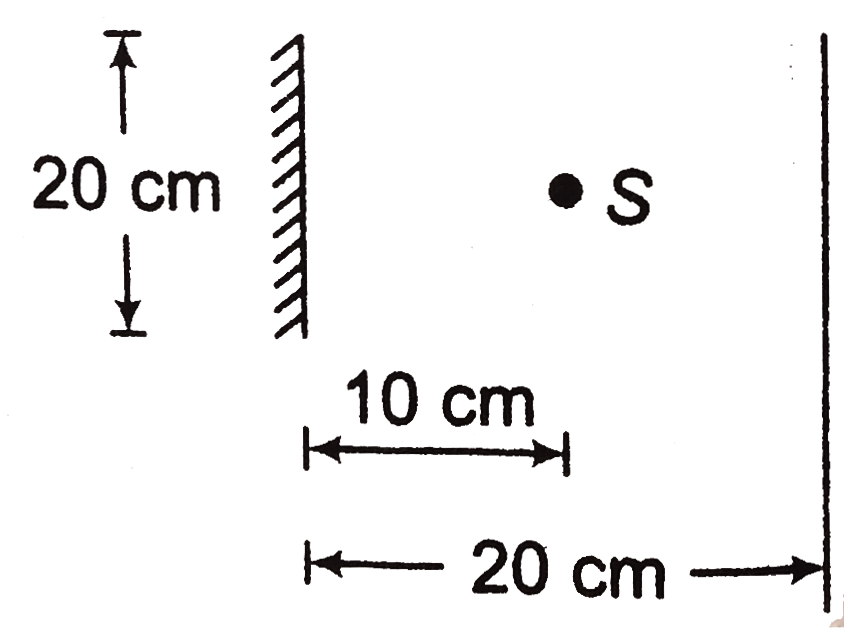Assertion A mirror has only one focus, while that of lens has two focii.
Reason Both the focii of a mirror coincide at one point.
If both Assertion and Reason are true and Reason is the correct explanation of Assertion.
If both Assertion and Reason are true but Reason is not correct explanation of Assertion.
If Assertion is true but Reason is false.
If Assertion is false but Reason is true.
The correct Answer is:A
To solve the question, we need to analyze the assertion and reason provided:
Assertion: A mirror has only one focus, while that of a lens has two foci.
Reason: Both the foci of a mirror coincide at one point.
1. Understanding the Focus of a Mirror:
- A concave mirror has a single focus point where parallel rays of light converge after reflecting off the mirror's surface. This focus is located along the principal axis of the mirror.
2. Understanding the Focus of a Lens:
- A lens, such as a convex lens, has two focal points: one on each side of the lens. When parallel rays of light pass through a convex lens, they converge at the focal point on the opposite side. Similarly, rays coming from the opposite side converge at the focal point on the original side.
3. Analyzing the Assertion:
- The assertion states that a mirror has only one focus. This is true for concave mirrors, as they have a single focal point where light rays converge.
4. Analyzing the Reason:
- The reason states that both the foci of a mirror coincide at one point. This is also true, as a concave mirror has a single focus, and thus the two foci (if considered) would indeed coincide at that single point.
5. Conclusion:
- Both the assertion and the reason are correct. The reason provided is a valid explanation for the assertion, as it clarifies why a mirror has only one focus.
Final Answer:
Both the assertion and reason are correct, and the reason is the correct explanation for the assertion.
---
- A concave mirror has a single focus point where parallel rays of light converge after reflecting off the mirror's surface. This focus is located along the principal axis of the mirror.
- A lens, such as a convex lens, has two focal points: one on each side of the lens. When parallel rays of light pass through a convex lens, they converge at the focal point on the opposite side. Similarly, rays coming from the opposite side converge at the focal point on the original side.
- The assertion states that a mirror has only one focus. This is true for concave mirrors, as they have a single focal point where light rays converge.
- The reason states that both the foci of a mirror coincide at one point. This is also true, as a concave mirror has a single focus, and thus the two foci (if considered) would indeed coincide at that single point.
- Both the assertion and the reason are correct. The reason provided is a valid explanation for the assertion, as it clarifies why a mirror has only one focus.
Both the assertion and reason are correct, and the reason is the correct explanation for the assertion.
Topper's Solved these Questions
- RAY OPTICSBook:DC PANDEY ENGLISHChapter:RAY OPTICSExercise:Medical entrance gallary
Explore 73 Videos
- RAY OPTICSBook:DC PANDEY ENGLISHChapter:RAY OPTICSExercise:Exercise
Explore 170 Videos
- NUCLEIBook:DC PANDEY ENGLISHChapter:NUCLEIExercise:C MADICAL ENTRANCES GALLERY
Explore 46 Videos
- REFLECTION OF LIGHTBook:DC PANDEY ENGLISHChapter:REFLECTION OF LIGHTExercise:Subjective
Explore 9 Videos
Similar Questions
Two identical glass (μg=3/2) equi- convex lenses of focal length f each are kept in contact. The space between the two lenses is also filled with water (μg=4/3). The focal length of the combination is
View SolutionWhen light is passed through a prismm when………colour shows maximum deviation.
View SolutionThe half-life of a radioactive substance is 30 minutes, The time (in minutes) taken between 40% decay and 85% decay of the same radioactive substance is.
View SolutionA point source of light S is placed at a distance 10 cm in front of the centre of a mirror of width 20 cm suspended vertically on a wall. An insect walks with a speed 10cm/s in front of the mirror along a line parallel to the mirror at a distance 20 cm from it as shown in figure. find the maximum time during which the insect can see the image of the source S in the mirror.

View SolutionIf a conic passing through origin has (3,3),(-4,4) as its focii,then
View SolutionWhich spherical mirror has a real focus and which one has a virtual focus ?
View SolutionAssertion A mirror has only one focus, while that of lens has two focii.
Reason Both the focii of a mirror coincide at one point.
View Solutionकिसी गोलीय दर्पण तथा किसी पतले गोलीय लेंस दोनों की फोकस दूरियाँ -15 सेमी है। दर्पण तथा लेंस सभवत: है-
View Solutionकिस दर्पण की फोकस दूरी ऋणात्मक तथा किस दर्पण की फोकस दूरी धनात्मक होती है ?
View Solutionकिसी गोलीय दर्पण तथा किसी पतले गोलीय लेन्स दोनों की फोकस दूरियां -15 cm है। दर्पण तथा लेन्स सम्भवत: हैं-
View SolutionAssertion :- If one half of a mirror is covered by an opaque material, then only half image of the object is formed.
Reason :- By covering one half of the mirror, focal length of mirror will be halved.
View Solutionलेंस में दो फोकस बिन्दु होते हैं, जबकि गोलीय दर्पण में केवल एक। कारण बताइए।
View Solutionअवतल दर्पण की फोकस दूरी ___ होती है।
View Solutionलेंस में दो फोकस बिन्दु होते हैं किन्तु गोलीय दर्पण में केवल एक, क्यों ?
View Solutionकिस दर्पण की फोकस दूरी अनंत होती है ?
View Solution
